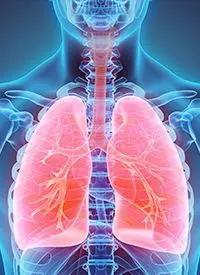News
Article
Becotarug Plus Osimertinib Elicits Responses in EGFR Exon 20 Insertion+ NSCLC
Author(s):
Becotarug plus osimertinib elicited responses with manageable safety in patients with non–small cell lung cancer and EGFR exon 12 insertion mutations.
Non–Small Cell Lung Cancer |
Image Credit: © yodiyim
- stock.adobe.com

The combination of becotarug (JMT101) and osimertinib (Tagrisso) induced antitumor activity with a manageable safety profile in patients with non–small cell lung cancer (NSCLC) harboring EGFR exon 12 insertion mutations, according to findings from the phase 2 BECOME study (NCT05132777) presented during the 2024 European Lung Cancer Congress.1
The doublet led to an objective response rate (ORR) of 50.0% (95% CI, 40.4%-59.6%) in the intention-to-treat (ITT) population (n = 112) comprised entirely of partial responses. Moreover, 29.5% of patients achieved stable disease as their best overall response to treatment, 8.9% experienced disease progression, and 11.6% were not evaluable. The disease control rate (DCR) was 79.5% (95% CI, 70.8%-86.5%).
The median progression-free survival (PFS) experienced with the regimen was 6.9 months (95% CI, 5.9-8.8); the 6-month PFS rate was 57.7% (95% CI, 46.8%-67.2%) and the 12-month PFS rate was 31.0% (95% CI, 18.9%-43.9%).
“The combination of becotarug and osimertinib provides a new treatment option for [patients with] EGFR exon 20 insertion–positive NSCLC,” Li Zhang, MD, of Sun Yat-sen University Cancer Center, in Guangzhou, China, said in a presentation of the data.
Limited options are available to patients with EGFR exon 20 insertion mutations, Zhang said. Earlier data from a phase 1b trial (NCT04448379) showed that when becotarug, the humanized IgG1 monoclonal antibody targeting EGFR, was given at 6 mg/kg once every 2 weeks plus osimertinib at 160 mg once daily, it had activity in this population.2 In 41 evaluable patients, the median PFS was 8.2 months (95% CI, 6.8-9.5).
The open-label, single-arm, multicenter, prospective phase 2 study enrolled patients with stage IIIB to IV NSCLC harboring EGFR exon 20 insertion mutations who were at least 18 years of age and who had progressed on platinum-based chemotherapy.1
Participants (n = 126) were administered becotarug at 6 mg/kg once every 2 weeks plus osimertinib at 160 mg once daily. Treatment continued until disease progression, intolerable toxicity, patient withdrawal, or lack of clinical benefit.
The primary end point of the trial was ORR by independent review committee (IRC) assessment in the ITT population, and secondary end points include investigator-assessed ORR, duration of response, DCR, PFS, overall survival, and safety.
The median patient age was 59 years (range, 34-82) and 51.6% of patients were male. Regarding histology, the majority (97.6%) had adenocarcinoma, and the remainder had squamous cell carcinoma (0.8%) and adenosquamous cell carcinoma (1.6%). More than half of patients had an ECOG performance status of 1 (63.5%). In terms of smoking history, 68.3% of patients were never smokers and 31.0% were ever smokers; this information was unknown for 0.8% of patients. The majority of patients had stage IV disease (99.2%) and 1 patient had stage IIIB disease. Moreover, 36.5% of patients had central nervous system metastases at baseline.
The median number of prior systemic therapies received was 1, with a range of 1 to 5. Previous anticancer regimens received included medication (100%), radiotherapy (35.7%), surgery (31.0%), and other (1.6%).
Additional data indicated that more than 90% of the patients experienced tumor shrinkage.
Moreover, at the data cutoff date of December 21, 2023, 50.0% of patients had died or experienced disease progression.
Data from an exploratory analysis indicated that the most common co-mutations were TP53, PMS2, and PIK3CG, and no clear correlation between the co-mutations and response rate achieved with the doublet was observed. “Antitumor responses were observed in patients who harbored insertions within the helical, near-loop, and far-loop regions of EGFR exon 20,” Zhang noted.
The toxicity profile of the doublet was mainly EGFR target–related and manageable, Zhang noted, and no new safety signals were observed.
All patients experienced all-grade adverse effects (AEs) and 99.2% were treatment related. Moreover, 81.0% of patients experienced grade 3 or higher AEs, 78.6% of which were related to the doublet. Serious AEs occurred in 42.1% of patients and 35.7% of them were related to treatment. Twelve patients experienced AEs that resulted in death, and 4 of them were determined to be related to the study treatment. Interstitial lung disease occurred in 2.4% of patients, Zhang said.
The most common treatment-related AEs included rash (any grade, 80.2%; grade ≥3, 31.7%), diarrhea (67.5%; 9.5%), oral mucositis (65.1%; 9.5%), reduced appetite (65.1%; 4.0%), decreased weight (58.7%; 2.4%), nail toxicity (53.2%; 2.4%), dry skin (50.8%; 11.9%), thrombocytopenia (46.8%; 4.0%), vomiting (46.0%; 3.2%), leukopenia (43.7%; 4.0%), anemia (42.1%; 5.6%), and hypoalbuminemia (40.5%; 0%).
Editor’s Note: Dr Zhang disclosed serving in a consulting or advisory role for AstraZeneca and Innovent Biologics; being on the Speakers’ Bureau for AstraZeneca, BeiGene, HengRui Pharm, Innovent Biologics, and Roche; and receiving research funding from AstraZeneca, Akeso Biopharma, Bristol Myers Squibb, Chia Tai Tianqing Pharmaceutical Group, Junshi Pharmaceuticals, QiLu Pharmaceutical, and Pfizer.
References
- Zhang L, Fang W, Zhao S, et al. Phase II study of becotarug (JMT101) combined with osimertinib in patients (pts) with locally advanced or metastatic NSCLC harboring EGFR exon 20 insertion (ex20ins) mutations (BECOME study). Presented at: 2024 European Lung Cancer Congress; March 20-23, 2024; Prague, Czech Republic. Abstract 137MO.
- Zhao S, Zhuang W, Han B. Phase 1b trial of anti-EGFR antibody JMT101 and osimertinib in EGFR exon 20 insertion–positive non–small–cell lung cancer. Nat Commun. 2023;14(1):3468. doi:10.1038/s41467-023-39139-4








